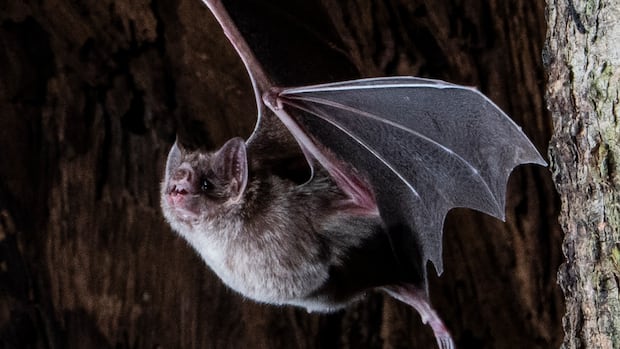In a world where bats are often associated with bad luck and hair entanglement, vampire bats take the cake for having the most sinister reputation. Portrayed as bloodthirsty and eerie creatures, these bats are actually quite fascinating beings that exhibit altruistic behaviors and surprising abilities. For instance, it may come as a surprise to learn that vampire bats can not only walk on all fours but can also run.
Every year, a group of 70 to 80 scientists convene at the ancient Mayan ruins of the Lamanai Archaeological Reserve in Belize for an event dubbed “Bat-a-thon.” During this two-week field study, researchers delve into the lives of the 45 species of bats residing in the area, exploring their behaviors and characteristics. The documentary “Empire of Bats” features Anthony Morgan participating in Bat-a-thon to unveil the mysteries of these winged creatures.
Despite the misconceptions surrounding bats, the Bat Conservation Trust in the U.K. estimates that there are approximately 1,500 bat species worldwide, constituting about 20% of all mammal species. Notably, only three types of bats are categorized as vampire bats, with the common vampire bat, in particular, posing challenges for farmers as they feed on livestock, potentially spreading diseases like rabies.
Measuring between seven to nine centimeters in length, common vampire bats are known for their remarkable abilities, such as their capacity to jump over a meter from the ground to take flight. Additionally, these bats exhibit a unique sideways walk that researchers believe aids them in circling their prey before feeding.
In a captivating segment of “Empire of Bats,” Kenneth Welch from the University of Toronto showcases a video of a vampire bat walking on a treadmill, demonstrating their agile movements. Described as “little ninjas,” vampire bats utilize echolocation and heat sensors to locate their prey, identifying suitable blood vessels for feeding. Their saliva contains potent anticoagulants that prevent blood clotting, showcasing potential medical benefits for conditions like strokes.
Despite their predatory nature, vampire bats display a compassionate side by caring for their young, with mothers nurturing their offspring for extended periods until they can fend for themselves. These bats also exhibit communal behavior, sharing meals with less successful hunters to ensure the group’s well-being.
For a deeper dive into the world of vampire bats and their intriguing behaviors, viewers can explore “Empire of Bats” on CBC Gem and The Nature of Things YouTube channel.



